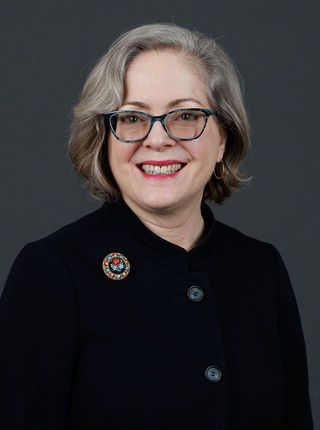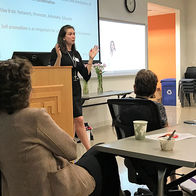Mary F. Barbe, PhD
Professor, Cardiovascular Sciences
Professor, Aging + Cardiovascular Discovery Center (ACDC)
Professor, Center for Substance Abuse Research
Professor, Biomedical Education and Data Science
Professor, Neural Sciences

- Contact Information
-
- About Me
-
Research Interests
My focus is on two main areas of research: 1) the effect of repetition and force on musculoskeletal and neural systems, and their interaction in a unique rat model of work-related musculoskeletal disorder (also known as repetitive strain injury), and 2) examining surgical means of bladder reinnervation after sacral spinal root injury.
For the past 20 years, one of my areas of research focus is examining the effects of overuse injury on musculoskeletal tissues, specifically the effects of repetition and force on tissues as a consequence of an upper extremity Work-Related Musculoskeletal Disorders (a type of overuse injury), using a novel operant rat model developed in my laboratory. Using this unique model, I have examined the effects of varying levels of repetitive and forceful work tasks on musculoskeletal and nervous system pathophysiology, focusing on injury and inflammation initially, and how these processes induced tissue degeneration and sensorimotor dysfunction. I am currently exploring inducers of tissue fibrosis and degeneration occurring with overuse, as well as effective interventions for the inflammatory and fibrotic tissue changes as well as associated behavioral declines. This work is currently funded by NIAMS.
I am also currently examining means of successful reinnervation of bladder and urethral sphincter targets after spinal root injury in collaboration with Dr. Michael Ruggieri who recently retired from The Lewis Katz School of Medicine at Temple University. We have shown that functional reinnervation (using electrophysiology) and recentralization (using neuroanatomical tract tracing) of the bladder can occur using a number of surgical strategies, including: homotopic reconnection of severed sacral roots innervating the bladder, as well as heterotopic reconnection using genitofemoral or femoral nerves that originate from more rostral spinal cord segments. We have also shown successful reinnervation of the external urethral sphincter using the pudendal nerve. This work is currently funded by NINDS.
- Education, Training & Credentials
-
Educational Background
- Postdoctoral Research Fellowship, Anatomy and Neurobiology, The Medical College of Pennsylvania, 1991
- PhD, Anatomy, Bowman Gray School of Medicine, Wake Forest University, Winston-Salem, NC, 1987
- BA, Biology, University of North Carolina, Chapel Hill, NC, 1982
Memberships
- American Society for Bone and Mineral Research
- American Association of Anatomists
- Advances in Matrix Mineralization
- Human Factors and Ergonomics Society
- Orthopaedic Research Society
- Society for Neuroscience
- Publications
-
Digital Bibliography


